Drawing with Interest: How to Make Your Drawings Pop
Are you ready to take your drawing skills to the next level? Drawing isn't just about putting pencil to paper; it's about creating a visual experience that captivates your audience. In this article, we will explore a variety of techniques and tips that will help you enhance your drawing skills and make your art truly engaging. Whether you're a beginner looking to improve or a seasoned artist seeking new inspiration, there’s something here for everyone. So, let’s dive in and discover how to infuse life into your creations!
Composition is the backbone of any drawing. Think of it as the blueprint that guides your artwork. A well-composed piece will not only attract the viewer's eye but will also convey the intended message of your art. When arranging the elements in your drawing, consider balance, contrast, and focal points. For instance, placing a vibrant subject in the foreground against a muted background can draw attention immediately to that subject. The goal is to create a visual pathway that guides the viewer's gaze across your artwork, allowing them to appreciate every detail. So, ask yourself: what do you want your audience to focus on? By answering this question, you can effectively arrange your elements to achieve that focus.
Color theory plays a crucial role in making drawings vibrant and emotionally resonant. Understanding the color wheel is essential, as it helps you grasp how colors interact with one another. Complementary colors, which are opposite each other on the wheel, can create stunning contrasts that make your artwork pop. For example, pairing blue with orange can evoke a sense of energy and excitement. When you effectively use hues, you can not only enhance the visual appeal of your artwork but also evoke specific emotions. Think of color as a language; it can communicate feelings and set the mood of your piece.
Learning to mix colors can transform your drawings from ordinary to extraordinary. It’s like being a chef in the kitchen, experimenting with flavors until you find the perfect recipe. Start with the primary colors and experiment by blending them to create unique shades. This technique not only adds depth but also personalizes your artwork. For instance, instead of using a flat green, try mixing yellow and blue to create a vibrant, lively green that reflects the essence of nature. Remember, the more you practice mixing, the more confident you will become in creating your own color palette.
Layering is a powerful method to achieve richness in color and detail. By applying multiple layers of color, you can build complexity that draws the viewer in. Start with a base layer and gradually add more colors, allowing each layer to dry before adding the next. This technique creates a dynamic visual experience that can make your drawings appear more three-dimensional. Imagine painting a sunset; the first layer might be a soft yellow, followed by layers of orange and purple to create a breathtaking sky. The result? A piece that feels alive and full of emotion!
Contrast is your best friend when it comes to making elements stand out in your drawings. By effectively using light and dark colors, you can create emphasis that guides the viewer's attention. For example, a bright red apple against a dark green background will immediately draw the eye. Contrast not only enhances the aesthetic of your artwork but also adds drama and intrigue. So, don’t shy away from using bold contrasts; they can elevate your art to new heights!
Textures can add realism and interest to your drawings, making them feel tangible and inviting. Whether it’s the rough bark of a tree or the soft fur of an animal, creating textures can bring different materials and surfaces to life. Techniques such as cross-hatching, stippling, or even using different tools can help you achieve the desired texture. Imagine running your fingers over the page and feeling the grooves of a textured surface; that’s the kind of engagement you want to create with your audience!
Exploring different artistic styles can ignite creativity and open up new avenues for expression. Don’t be afraid to step outside your comfort zone and try something new! Whether it’s abstract, realism, or surrealism, experimenting with various techniques can lead to delightful surprises. You might discover a style that resonates with you more than you ever expected. Remember, art is a journey, and every experiment is a step toward finding your unique voice.
Every artist has a unique perspective, and developing your style is crucial in expressing that individuality. Embrace your quirks and let them shine through your art! This process is all about experimentation and self-expression. Try different mediums, techniques, and subjects until you find what truly resonates with you. Your unique voice is what will captivate your audience and set your work apart from others.
Combining various drawing techniques can yield surprising results that capture the viewer's imagination. Think of it as mixing different genres of music; the fusion can create a unique sound that resonates deeply. Try blending techniques like watercolor with ink or charcoal with colored pencils to create innovative creations. The possibilities are endless, and the result can be a stunning masterpiece that reflects your artistic journey.
- What is the best way to start improving my drawing skills? Start by practicing regularly and experimenting with different techniques.
- How important is color theory in drawing? Color theory is essential as it helps you understand how colors interact and can evoke emotions.
- Can I develop my unique style over time? Absolutely! Your style will evolve as you experiment and gain more experience.
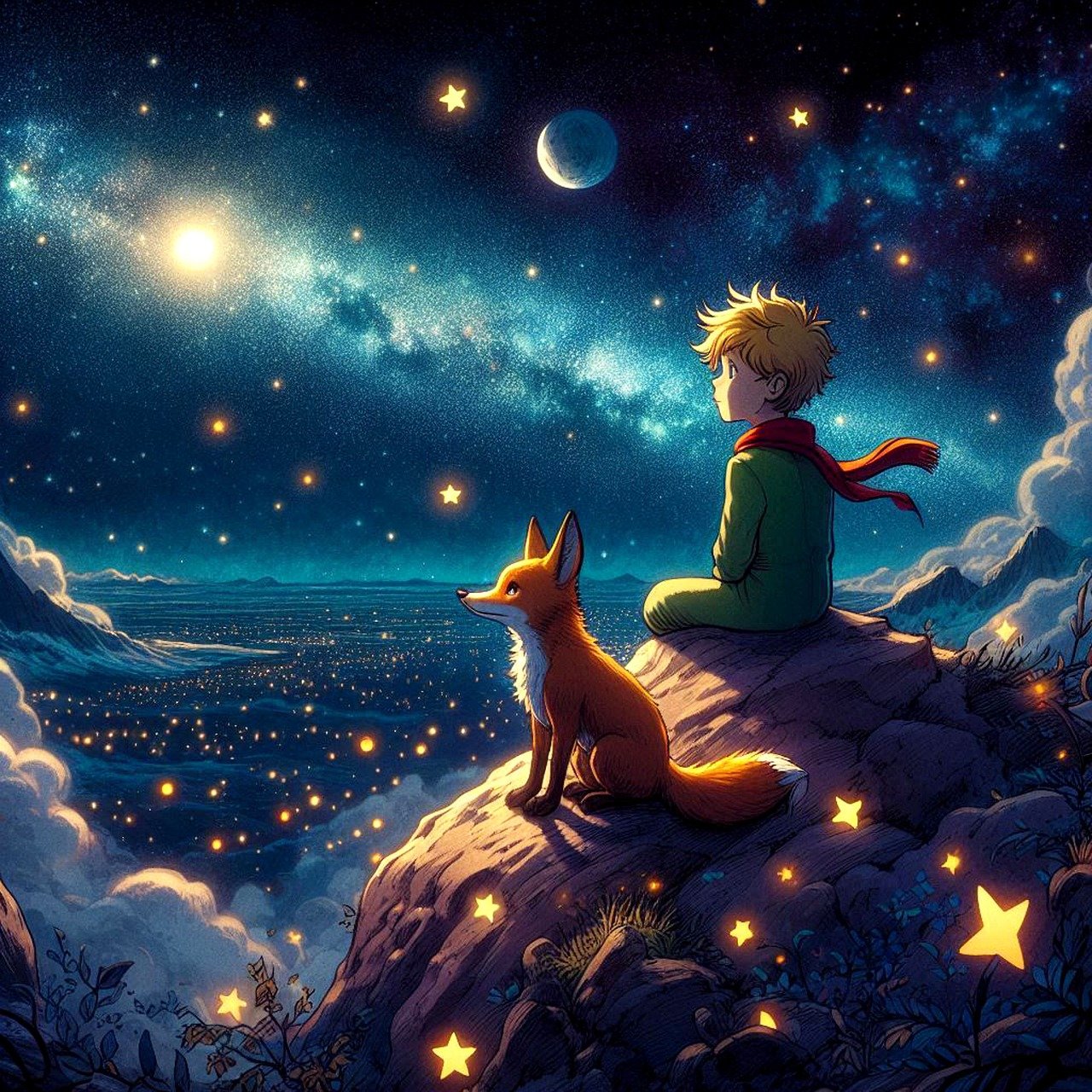
Understanding Composition
This article explores techniques and tips to enhance your drawing skills, making your art more engaging and visually appealing. Learn how to infuse life into your creations and captivate your audience.
When diving into the world of drawing, one of the first things you need to grasp is composition. Think of composition as the blueprint of your artwork; it’s the way you arrange elements on your canvas that can either make or break your piece. Imagine walking into a room where the furniture is haphazardly placed. It's chaotic, right? Now, picture a room where everything is in harmony. The same principle applies to your drawings. Effective composition guides the viewer’s eye, creating a visual journey that leads them to the focal points of your artwork.
So, what are the key elements to consider when composing your drawings? Here are a few crucial aspects:
- Balance: This refers to the distribution of visual weight in your artwork. A well-balanced piece feels stable and pleasing to the eye. You can achieve balance through symmetry or asymmetry, depending on the mood you want to convey.
- Focal Point: Every artwork should have a point of interest that draws the viewer in. This could be a character, an object, or even a specific color. Make sure to emphasize this focal point through size, color contrast, or placement.
- Rule of Thirds: Imagine dividing your canvas into a 3x3 grid. Placing your main subject along these lines or at their intersections can create a more dynamic composition, making your artwork more engaging.
Additionally, consider the flow of your composition. Just like a good story, your drawing should have a beginning, middle, and end. Lead the viewer’s eye through your work by using lines, shapes, and colors that create a sense of movement. For instance, if you’re drawing a landscape, you might use a winding river to guide the viewer's gaze across the scene.
Lastly, don't forget about negative space. This is the area around and between the subjects of your artwork. Utilizing negative space effectively can enhance your composition by providing breathing room and emphasizing your focal point. Think of it as the silent partner in your artwork—just as important as the subjects themselves!
In summary, mastering composition is about understanding how to arrange elements in a way that creates balance, guides the viewer's eye, and enhances the overall impact of your drawing. With practice and experimentation, you’ll learn to create compositions that not only attract attention but also tell a story, making your drawings truly come alive.
- What is the importance of composition in drawing?
Composition is crucial because it dictates how the viewer interacts with your artwork. A well-composed piece draws the eye and creates a sense of harmony. - How can I improve my composition skills?
Practice is key. Study the works of artists you admire, experiment with different compositions, and always be open to feedback. - What are some common mistakes in composition?
Common mistakes include overcrowding the canvas, neglecting negative space, and failing to establish a clear focal point.
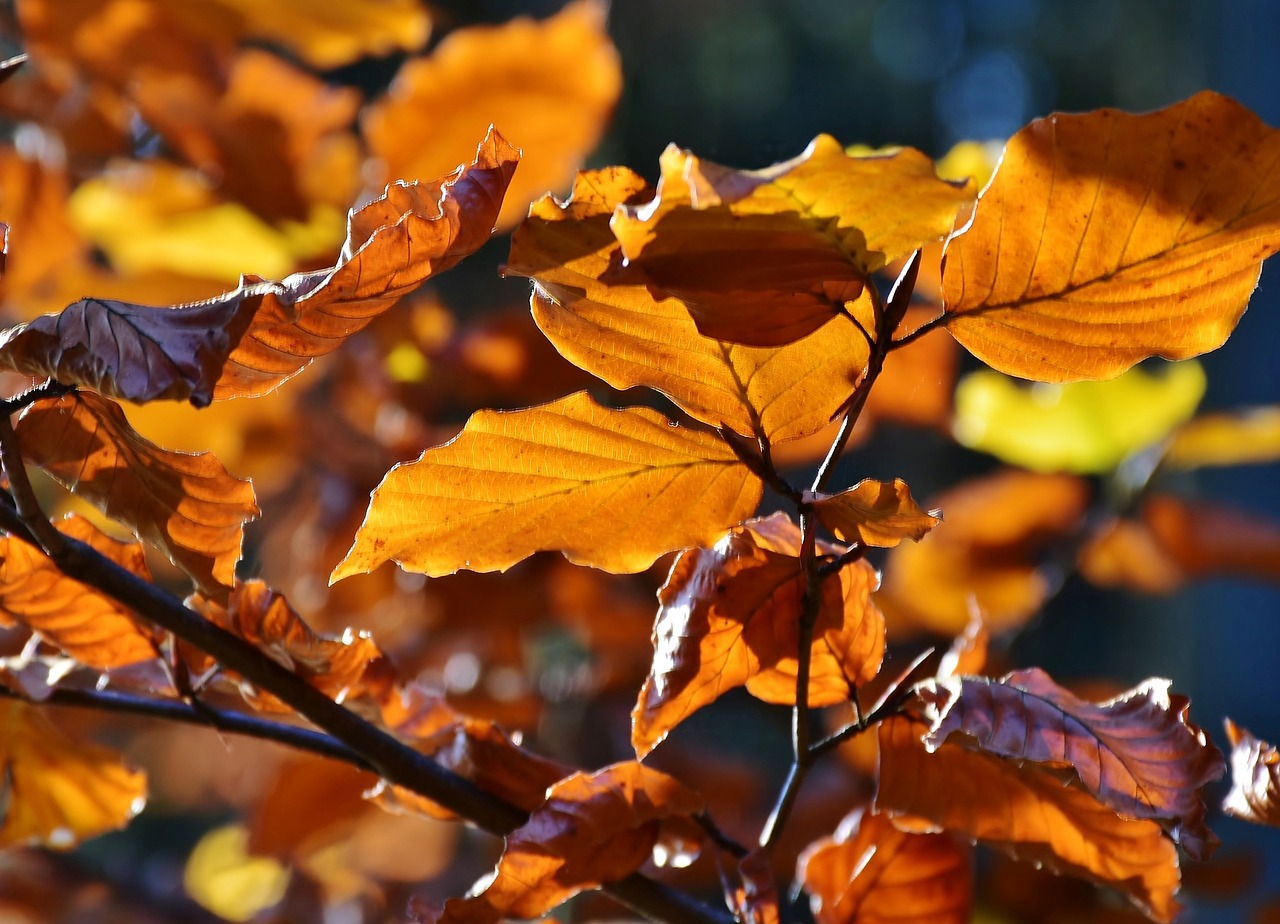
Utilizing Color Theory
Color theory is like the secret sauce that can elevate your drawings from ordinary to extraordinary. Understanding how colors interact with each other opens up a treasure trove of possibilities for your artwork. Imagine walking into a vibrant garden filled with flowers of every hue; that’s the kind of impact you want your drawings to have! By mastering the basics of color theory, you can create compositions that are not only visually stunning but also emotionally resonant.
At its core, color theory revolves around the color wheel, a circular diagram that organizes colors in a way that highlights their relationships. The primary colors—red, blue, and yellow—are the building blocks of all other colors. By mixing these primary colors, you can create secondary colors like green, orange, and purple. But it doesn’t stop there! Tertiary colors, which are formed by mixing primary and secondary colors, add even more depth to your palette.
One of the key concepts in color theory is the idea of complementary colors. These are colors that are opposite each other on the color wheel, like blue and orange or red and green. When placed next to each other, complementary colors create a striking contrast that can draw the viewer's eye and make elements in your drawing pop. This technique is especially effective when you want to highlight a particular subject or area of your artwork.
But how do you choose the right colors for your drawing? Think about the emotions you want to evoke. For instance, warm colors like reds, oranges, and yellows tend to convey energy and excitement, while cool colors like blues and greens often evoke calmness and tranquility. By thoughtfully selecting your colors, you can guide the viewer's emotional response to your work.
Learning how to mix colors effectively is a game-changer for any artist. It’s like being a chef who knows how to blend flavors to create a delicious dish. Start by experimenting with different ratios of primary colors to see how they interact. For example, mixing a bit of blue with yellow can give you a range of greens, from vibrant lime to deep olive. The key is to practice and not be afraid to make mistakes; some of the best discoveries come from unexpected results!
Layering is another fantastic technique to enhance your use of color. By applying multiple layers of color, you can build richness and complexity in your artwork. Start with a base layer and gradually add more colors on top, allowing each layer to dry before adding the next. This method not only adds depth but also enables you to create stunning gradients and transitions that can make your drawings feel more dynamic.
Contrast is your best friend when it comes to making elements stand out. Think of it like the spotlight on a stage; it draws attention to what you want the audience to focus on. By juxtaposing light and dark colors, you can create emphasis in your artwork. For instance, if you have a bright yellow flower against a dark green background, the flower becomes the undeniable star of the show. Play around with different contrasts to see how they affect the overall composition of your drawing.
Textures can also play a significant role in utilizing color theory. Different textures can reflect light in unique ways, affecting how colors appear. For example, a shiny surface may amplify the vibrancy of a color, while a matte surface can soften it. Experimenting with various materials and techniques can help you achieve the desired texture in your drawings, making them even more captivating and lifelike.
- What is color theory? Color theory is a system that explains how colors interact and how they can be combined to create visually appealing artwork.
- Why is understanding color important for artists? Understanding color helps artists create emotional connections with their audience and enhances the overall impact of their work.
- How can I practice mixing colors? Start with a basic palette of primary colors and experiment by mixing them in different ratios to create secondary and tertiary colors.
- What are complementary colors? Complementary colors are pairs of colors that, when combined, cancel each other out, producing a grayscale color. They are located opposite each other on the color wheel.
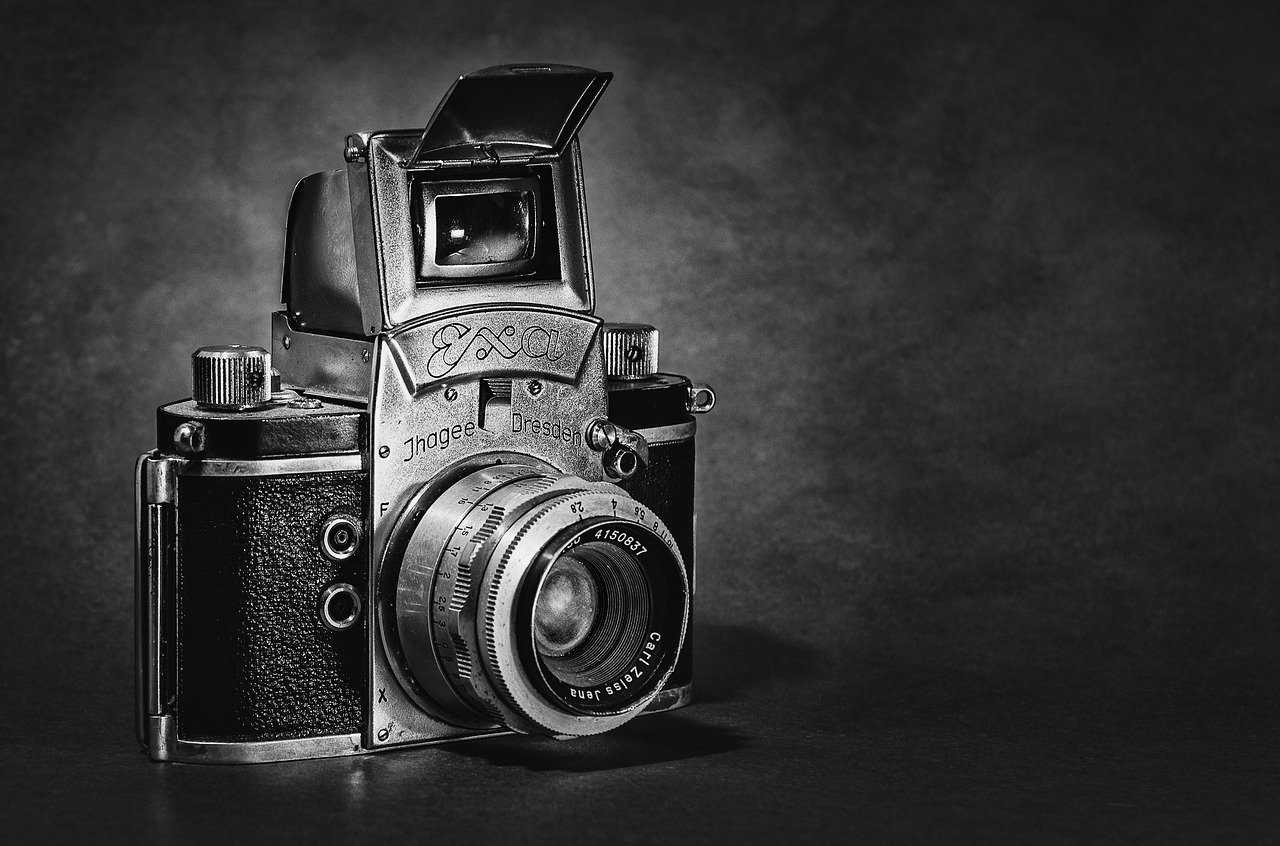
Mixing Colors
Mixing colors is like creating a delicious recipe; the right combination can lead to something truly spectacular! When you're armed with a basic understanding of color theory, mixing colors becomes an exciting adventure rather than a daunting task. Imagine standing in front of a blank canvas, palette in hand, ready to unleash a symphony of colors that will breathe life into your artwork. The beauty of mixing colors lies not just in the final outcome, but in the journey of exploration that each stroke of your brush or pencil brings.
To get started, it's essential to familiarize yourself with the primary colors: red, blue, and yellow. These colors are the building blocks of all other hues. By combining them in different ways, you can create a vast spectrum of colors that can add depth and emotion to your drawings. For example:
- Red + Yellow Orange
- Blue + Yellow Green
- Red + Blue Purple
But don’t stop there! Mixing colors is not just about creating secondary colors; it's also about exploring the nuances of shades and tints. By adding white to a color, you create a tint, which lightens the original hue, while adding black results in a shade, which darkens it. This technique can dramatically enhance your artwork, providing a range of tonal values that can evoke different feelings and atmospheres. Think of it as adding spices to a dish; the right amount can elevate your creation from ordinary to extraordinary.
Another important aspect of mixing colors is understanding the concept of complementary colors. These are colors that are opposite each other on the color wheel, such as blue and orange or red and green. When placed next to each other, complementary colors create a stunning contrast that can make your artwork pop. However, when mixed together, they can neutralize each other, resulting in a muted tone that can be useful for shadows or background elements. It’s a delicate balance, much like a dance, where you must learn the steps to achieve harmony in your artwork.
To master the art of mixing colors, practice is key. Start by experimenting on scrap paper or a separate canvas. Create a color mixing chart where you can see how different combinations work together. This will not only help you understand the relationships between colors but also give you confidence in your mixing abilities. Remember, even the most seasoned artists had to start somewhere, so don’t be afraid to make mistakes. Each mishap is simply a stepping stone toward mastering your craft!
In conclusion, mixing colors is an essential skill that can elevate your drawings to new heights. By understanding the basics of color theory, experimenting with different techniques, and embracing the beauty of mistakes, you'll find that the world of color mixing is as vast and exciting as your imagination allows. So grab your brushes, unleash your creativity, and let your colors dance across the canvas!
Q1: What are the primary colors?
A1: The primary colors are red, blue, and yellow. They cannot be created by mixing other colors and serve as the foundation for all other hues.
Q2: How do I create a shade?
A2: To create a shade, simply add black to a color. This will darken the original hue, giving you a richer tone.
Q3: What are complementary colors?
A3: Complementary colors are colors that are opposite each other on the color wheel, such as blue and orange or red and green. They create a striking contrast when used together.
Q4: How can I practice mixing colors?
A4: You can practice mixing colors by creating a color mixing chart on scrap paper. Experiment with different combinations and observe the results to gain confidence in your mixing skills.

Layering Techniques
Layering is like the secret sauce that can take your drawings from ordinary to extraordinary. Imagine building a cake—each layer adds flavor, texture, and depth, making the whole experience richer. In drawing, layering works similarly by allowing you to build up colors, textures, and details gradually. Instead of slapping on a single coat of color and calling it a day, layering invites you to engage with your artwork on a deeper level. It’s about creating a visual feast that draws the viewer in and keeps them captivated.
To effectively use layering techniques, start with a solid foundation. Begin with light colors or base layers that set the tone for your piece. Think of this as sketching out a blueprint for a building. Once you have your base down, you can start adding additional layers of color, gradually increasing the intensity and complexity. This method not only enhances the vibrancy of your artwork but also allows you to create an illusion of depth. The interplay of light and shadow becomes more pronounced, giving your drawings a three-dimensional quality.
Here are a few tips to help you master layering:
- Start Light: Always begin with lighter shades and gradually build up to darker tones. This helps prevent overwhelming your canvas and allows for better control over the final outcome.
- Blend Wisely: Use blending tools or techniques to soften the transitions between layers. This can create a smoother finish and enhance the overall aesthetic of your drawing.
- Experiment with Mediums: Different mediums (like colored pencils, watercolors, or acrylics) can react differently when layered. Don’t hesitate to experiment to see what works best for your style.
Another exciting aspect of layering is the ability to create textures that can add realism to your drawings. By applying layers of different colors and using varied pressure, you can mimic the look of different materials, such as the softness of a fabric or the roughness of a stone. This technique not only adds visual interest but also invites the viewer to engage with your artwork on a tactile level, making them feel as if they could reach out and touch it.
As you become more comfortable with layering, consider incorporating mixed media into your work. Combining different materials can lead to unexpected results and add even more depth to your pieces. For instance, you might use ink for outlines, watercolor for washes, and colored pencils for intricate details. The possibilities are endless, and the only limit is your imagination!
In conclusion, layering techniques are essential for any artist looking to enhance their drawings. By understanding how to build up colors and textures methodically, you can create stunning, multi-dimensional artwork that truly pops. So grab your tools, start experimenting, and watch your drawings come to life like never before!
1. What is the best way to start layering colors?
Start with light colors and gradually build up to darker shades. This allows for better control and prevents overwhelming your drawing.
2. Can I layer with different mediums?
Absolutely! Experimenting with different mediums can yield unique results and enhance the depth of your artwork.
3. How do I create textures using layering?
By applying layers of different colors and varying your pressure, you can mimic the appearance of various materials, adding realism to your drawings.

Using Contrast
When it comes to drawing, contrast is like the secret sauce that can elevate your artwork from ordinary to extraordinary. Imagine walking into a gallery and being immediately drawn to a piece that just pops off the canvas; that’s the power of contrast at work! It’s not just about slapping dark colors next to light ones; it’s about creating a visual dialogue that guides the viewer’s eye and evokes emotion.
To effectively use contrast in your drawings, consider the following key elements:
- Light vs. Dark: This is the most fundamental form of contrast. By juxtaposing light and dark colors, you can create depth and dimension. Think of it like a spotlight on a stage; the areas in light become the focal points, while the shadows recede, adding a three-dimensional quality to your work.
- Warm vs. Cool: Warm colors (like reds and yellows) can energize a drawing, while cool colors (like blues and greens) can create a calming effect. Using these color families in contrast can evoke different moods and feelings, transforming the emotional landscape of your artwork.
- Texture Contrast: Mixing textures can also create contrast. For instance, pairing a smooth, glossy area with a rough, matte surface can add intrigue and draw attention to specific parts of your drawing. It’s like having a conversation between different materials!
But how do you decide where to apply contrast? One effective method is to establish a focal point. This is the area of your drawing that you want to grab your audience's attention. Once you identify this spot, use contrast to enhance it. For example, if your focal point is a bright red apple, surrounding it with darker greens and browns can make it stand out even more. It’s all about creating a visual hierarchy that tells a story.
Another technique is to use negative space. This refers to the area around your subject. By intentionally leaving some areas blank or using lighter colors in the background, you can create a striking contrast that highlights your main subject. Think of it as giving your artwork room to breathe; it allows the viewer to focus on what truly matters.
Incorporating contrast doesn’t mean you have to stick to traditional methods. Feel free to experiment! Use unexpected color combinations or play with varying line weights to see how they interact. Remember, art is about exploration, and sometimes the most surprising outcomes come from taking risks. So grab your pencils, let your imagination run wild, and watch as your drawings transform into captivating masterpieces with the magic of contrast!
Q: How can I improve my use of contrast in drawings?
A: Start by practicing with different color palettes. Try creating several small sketches focusing solely on light and dark contrasts. Pay attention to how different colors interact and the emotions they evoke.
Q: Is contrast only about color?
A: Not at all! While color contrast is significant, you can also use contrast in textures, shapes, and sizes to create visual interest in your artwork.
Q: Can I use too much contrast?
A: Yes, overusing contrast can make a drawing feel chaotic. It’s essential to strike a balance; sometimes, subtle contrasts can be just as effective as bold ones.

Incorporating Textures
When it comes to drawing, textures can be the secret ingredient that elevates your artwork from ordinary to extraordinary. Imagine looking at a drawing where the fur of an animal looks so realistic that you can almost feel it, or a tree bark that seems rough enough to touch. That's the magic of textures! They add depth, interest, and a sense of realism that can captivate your audience and draw them into your work.
To effectively incorporate textures into your drawings, you need to first understand the different types of textures you can create. Here are a few common textures that can bring your artwork to life:
- Rough: This texture can be created using short, choppy strokes. Think of a rocky surface or a tree trunk.
- Smooth: Smooth textures often require blending techniques and soft strokes, like the surface of a calm lake.
- Soft: This can be achieved through gentle shading, perfect for creating the look of delicate fabrics or skin.
- Patterned: Using repetitive shapes or lines can create intricate patterns that add complexity to your work.
One effective way to practice creating textures is by studying the world around you. Take a walk outside and observe the different surfaces you encounter. How does the bark of a tree feel compared to the smooth surface of a pebble? By closely examining these textures, you can replicate them in your drawings. Try using different tools as well—like sponges, brushes, or even your fingers—to see how they alter the texture you create.
Another technique to enhance texture in your drawings is through layering. By building up multiple layers of color and shading, you can create a rich, textured effect that adds depth. For instance, when drawing a landscape, you might start with a base layer of color for the sky, then add clouds with a softer touch, and finally, detail the ground with rough, textured strokes to depict grass or rocks.
Don't forget about the power of contrast when it comes to textures. Using light and dark shades can help emphasize different areas of your drawing, making textures pop even more. For example, if you have a smooth surface next to a rough one, the contrast can highlight the differences, drawing the viewer's eye to those areas.
Finally, remember that the key to mastering textures lies in practice and experimentation. Don't be afraid to try new techniques or mix different styles. You might find that a combination of smooth and rough textures creates a unique effect that resonates with your artistic voice. So grab your materials, get creative, and watch as your drawings transform into captivating pieces of art that truly stand out!
- What tools are best for creating textures in drawings? Different tools can create various textures. Pencils, charcoal, pastels, and even brushes can help you achieve the desired effect. Experimenting with different mediums can yield surprising results!
- Can I use digital tools to create textures? Absolutely! Digital art software often includes texture brushes and effects that can mimic traditional techniques. Don't hesitate to explore these options!
- How can I practice creating textures? Observing real-life textures and replicating them in your sketches is a great way to practice. You can also take texture samples from magazines or online resources to study and draw from.
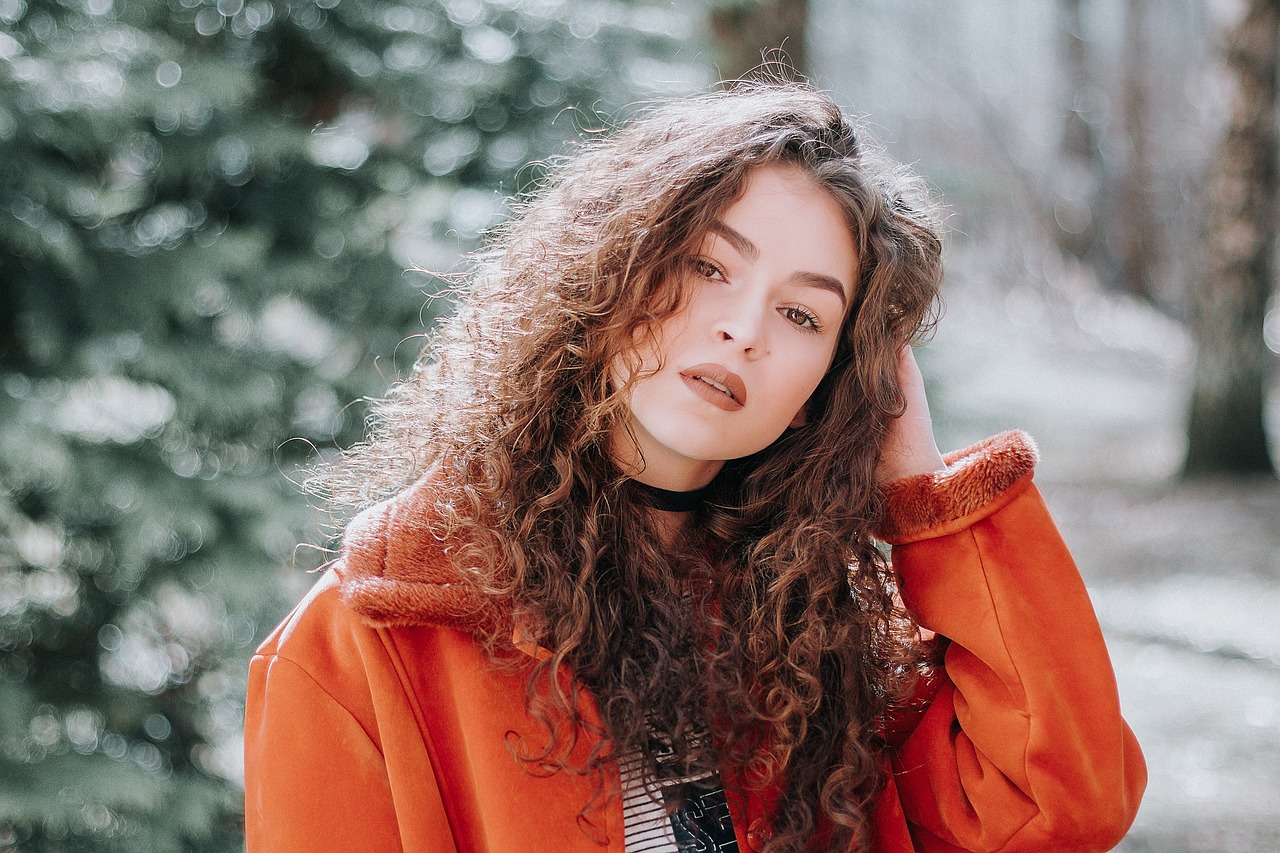
Experimenting with Styles
When it comes to art, one of the most exhilarating journeys you can embark on is . Think of it as a thrilling adventure where each new technique you try is like a different path through a vibrant forest of creativity. Why stick to a single style when the world of art is bursting with diverse expressions waiting to be explored? By stepping outside your comfort zone, you can uncover hidden talents and discover new ways to communicate your ideas on paper.
Imagine yourself as a chef in a kitchen, mixing various ingredients to create a unique dish. Each artistic style you experiment with can be viewed as a different ingredient that adds flavor to your creativity. From the bold strokes of expressionism to the delicate details of realism, each style has its own voice and emotional resonance. Don't be afraid to try out techniques that seem foreign to you. For example, blending the fluid lines of art nouveau with the geometric shapes of cubism could lead to a stunning fusion that captivates your audience.
As you explore these various styles, keep in mind that the goal isn't to master them all, but rather to find what resonates with you. Consider the following approaches to experimentation:
- Play with Mediums: Try using different materials like charcoal, pastels, or digital tools. Each medium offers a unique way to express your vision.
- Study Different Artists: Look at the work of artists from various movements. What techniques do they use? How can you adapt those techniques to your own style?
- Take Risks: Don’t shy away from making mistakes. Sometimes, the best creations emerge from unexpected accidents.
Finding your unique voice in art is akin to discovering your personal signature. Every brushstroke, every shade, tells a story that is distinctly yours. Embrace the idea that your style will evolve over time. Just like a tree grows and changes with the seasons, so too will your artistic expression. The more you experiment, the more you will refine your voice and convey your thoughts and emotions through your art.
Moreover, combining different techniques can yield surprising results. For instance, imagine blending the bold colors of pop art with the intricate detailing of realism. This fusion can create a striking visual experience that grabs the viewer's attention and invites them to engage with your work on a deeper level. It's about creating a dialogue between different styles and techniques, allowing your artwork to speak in a unique and captivating way.
In conclusion, don't hesitate to dive into the vast ocean of artistic styles. Each attempt to experiment is a step toward finding what truly resonates with you. Remember, art is not just about the final product; it's about the journey, the exploration, and the joy of creation. So grab your tools, unleash your creativity, and let your drawings pop like never before!
Q: How do I know which styles to experiment with?
A: Start by exploring artists that inspire you. Look into various art movements and see which styles resonate with your personal aesthetic. Don’t hesitate to try out different techniques until something clicks!
Q: Is it necessary to master a style before moving on to another?
A: Not at all! Art is about exploration and expression. You can learn and grow through experimentation, and sometimes the most innovative ideas come from blending styles rather than mastering one.
Q: Can experimenting with styles improve my overall drawing skills?
A: Absolutely! Experimentation encourages you to step outside your comfort zone, which can lead to improved techniques, new perspectives, and a deeper understanding of your artistic abilities.
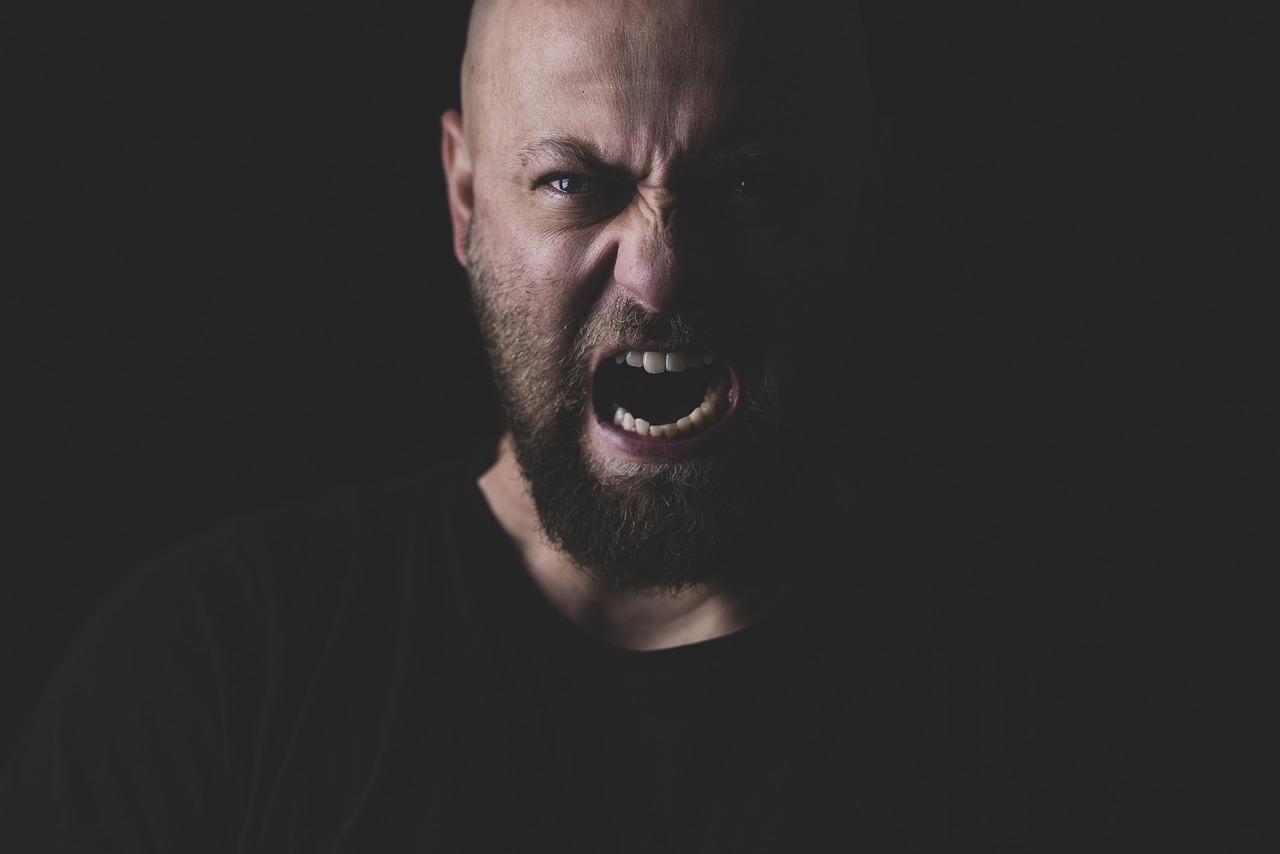
Finding Your Unique Voice
Every artist possesses a distinctive perspective that sets them apart from others. Finding your unique voice in art is akin to discovering your personal fingerprint; it’s an essential part of your identity as a creator. This journey can be both exhilarating and intimidating, as it requires a blend of introspection and experimentation. But how do you embark on this path? Well, it starts with understanding who you are and what inspires you. Think about the themes that resonate with you, the emotions you want to convey, and the stories you wish to tell through your artwork.
One effective way to explore your artistic voice is by immersing yourself in various influences. This could mean studying the works of artists you admire, whether they be contemporary or historical. Take notes on what captivates you about their styles—perhaps it’s their use of color, their choice of subjects, or the emotions their pieces evoke. By analyzing these elements, you can begin to identify aspects that you might want to incorporate into your own work.
Additionally, don’t shy away from experimenting with different mediums and techniques. Trying out various materials can lead to unexpected discoveries and help you uncover new facets of your creativity. For instance, if you usually work with pencils, why not give watercolors a shot? You might find that the fluidity of paint allows you to express emotions in ways you hadn’t imagined. The more you experiment, the more you’ll understand what feels authentic to you.
As you explore, consider keeping a visual journal. This journal can serve as a playground for your ideas, sketches, and thoughts. It’s a space where you can be free from judgment and simply create. Over time, you may notice recurring themes or styles in your journal that point toward your unique voice. Embrace these patterns as they can guide you in honing your artistic identity.
Another crucial aspect is embracing vulnerability. Allow yourself to create art that reflects your true self, even if it feels uncomfortable. Sometimes, the most powerful pieces come from our deepest fears, joys, or experiences. When you create from a place of authenticity, your work resonates more deeply with others, forging connections that can inspire and uplift.
Lastly, remember that finding your voice is a journey, not a destination. It evolves as you grow and change, so be patient with yourself. Celebrate the small victories along the way, and don’t be afraid to share your work with others. Feedback can be a valuable tool for growth, helping you refine your style while still staying true to your vision.
- How long does it take to find my unique voice?
Finding your unique voice is a personal journey that varies for everyone. It can take time, so be patient and enjoy the process. - Can I change my artistic voice over time?
Absolutely! Your artistic voice can evolve as you grow and gain new experiences. Embrace the changes as part of your creative journey. - What if I feel stuck in my artistic journey?
Feeling stuck is common. Try experimenting with new techniques, attending workshops, or collaborating with other artists to reignite your creativity.

Combining Techniques
When it comes to drawing, the magic often lies in the fusion of techniques. Imagine a chef who blends various ingredients to create a dish that tantalizes the taste buds; similarly, an artist can combine different drawing methods to create a visual feast. The beauty of combining techniques is that it opens up a world of possibilities, allowing you to explore beyond the conventional boundaries of art. It’s like mixing paint colors on a palette; the more you experiment, the richer your artwork becomes.
One effective way to start combining techniques is to identify the strengths of each method you want to use. For instance, you might be adept at pencil sketching but wish to incorporate watercolor effects. By blending these two techniques, you can create stunning contrasts between the sharpness of pencil lines and the fluidity of watercolors, resulting in a captivating piece that draws the viewer in. This approach not only enhances your artwork but also challenges you to think creatively and push your artistic limits.
Here are a few techniques you might consider combining:
- Pencil and Ink: Start with a detailed pencil sketch and then use ink to add depth and boldness, creating a striking contrast.
- Watercolor and Pastel: Use watercolors for the base and pastels for highlights, bringing a soft yet vibrant feel to your piece.
- Digital and Traditional: Create a traditional drawing and then enhance it digitally, allowing for adjustments and effects that can elevate your artwork.
Combining techniques not only enhances the visual appeal of your drawings but also encourages you to develop a unique artistic voice. As you experiment, you’ll discover what resonates with you and what captivates your audience. Remember, there are no strict rules in art; it’s all about finding what works best for you. So, don’t hesitate to mix, match, and merge different styles and methods. The results might surprise you and lead you to create something truly exceptional!
Q: How do I know which techniques to combine?
A: Start by identifying your strengths and the techniques you enjoy. Experiment with combinations that appeal to you and suit your artistic vision.
Q: Can combining techniques make my artwork look cluttered?
A: It’s possible if not done thoughtfully. Focus on balance and harmony in your composition to ensure that the techniques enhance rather than overwhelm your artwork.
Q: Are there any specific tools I should use when combining techniques?
A: The tools depend on the techniques you choose. For example, if you’re mixing watercolors with ink, ensure you have high-quality brushes and pens that work well together.
Q: Is it okay to combine techniques that are traditionally not used together?
A: Absolutely! Art is about exploration and self-expression. Don’t be afraid to break the rules and try unconventional combinations!
Frequently Asked Questions
- What is the importance of composition in drawing?
Composition is essential because it helps to create a balanced and engaging artwork. By effectively arranging the elements in your drawing, you can guide the viewer's eye to the focal points, making your art more captivating. Think of it like setting the stage for a play; the way you position the actors (or elements) can greatly influence the story being told!
- How does color theory enhance my drawings?
Color theory is crucial for making your drawings vibrant and emotionally impactful. By understanding the color wheel and how complementary colors work, you can choose hues that evoke specific feelings. It’s like seasoning in cooking—using the right mix can turn a bland dish into a culinary masterpiece!
- What techniques can I use for mixing colors?
Mixing colors can be a game-changer for your artwork. Techniques like blending and layering allow you to create unique shades that add depth and dimension. Just like mixing different ingredients in a recipe, the right combinations can lead to stunning results that make your drawings pop!
- How can layering techniques improve my art?
Layering techniques are fantastic for achieving richness in color. By applying multiple layers, you can build complexity and create a dynamic visual experience. It’s similar to building a cake; each layer adds flavor and texture, making the final product much more delightful!
- What role does contrast play in drawing?
Contrast is crucial for making elements stand out in your artwork. By using light and dark colors effectively, you can create emphasis and guide the viewer's attention. Think of it as the spotlight on a stage—it highlights what you want the audience to focus on!
- How can I incorporate textures into my drawings?
Textures add realism and interest to your drawings. Techniques such as cross-hatching, stippling, or using different tools can help you create various textures that bring materials and surfaces to life. It’s like adding fabric to a dress; it enhances the overall look and feel of your artwork!
- Why should I experiment with different artistic styles?
Experimenting with different styles can ignite your creativity and help you discover new techniques that resonate with you. It’s all about stepping outside your comfort zone and finding what truly reflects your unique artistic voice. Just like trying new foods can expand your palate, exploring various styles can broaden your artistic horizons!
- How can I find my unique artistic voice?
Finding your unique voice involves self-expression and experimentation. By trying out different techniques and styles, you can discover what feels right for you. Think of it as a journey; every artist has a distinct path that leads to their personal style, and embracing that individuality will captivate your audience!
- What are the benefits of combining different drawing techniques?
Combining various drawing techniques can yield surprising and innovative results. By blending styles and methods, you can create artwork that stands out and captures the viewer's imagination. It’s like mixing different genres of music; the fusion can create something entirely new and exciting!



















